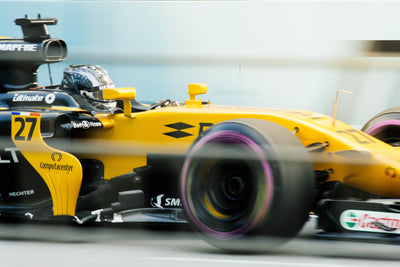Domestic US orders.

What is the Best Racing Harness or Seatbelt: 4-point, 5-point, or 6-point?
By Matt Lambert - Right Motorsport
Introduction:
Motorsport racing is an exciting and adrenaline-filled activity that attracts enthusiasts from all over the world. While speed and excitement are certainly part of the appeal, safety should always be the top priority when it comes to racing. One of the most important safety features in a race car is the racing harness or racing seat belt. These harnesses come in different configurations, including 4-point, 5-point, and 6-point harnesses, each with its advantages and disadvantages. In this article, we will explore the differences between these harnesses, as well as some of the products available from Fast Racer, and provide a comprehensive guide on how to choose the right harness for your needs.
4-Point Harness:
A 4-point harness is the most basic type of racing harness. It features two shoulder straps and two lap belts that buckle together at the center of the driver's waist. The straps of a 4-point harness do not cross the driver's chest, so there is no anti-submarine belt to prevent the driver from sliding forward in the event of a crash.
Pros: 4-point harnesses are relatively inexpensive and easy to install. They are also a good choice for novice drivers who are just starting out in motorsport racing.
Cons: The lack of an anti-submarine belt means that a 4-point harness does not provide as much protection as a 5-point or 6-point harness. It can also be uncomfortable to wear for long periods of time, as the shoulder straps can dig into the driver's shoulders.
Example product: The Sparco 4-Point Clip in Safety Harness is a budget-friendly option that retails for around $119.99.
5-Point Harness:
A 5-point harness adds an anti-submarine belt to the basic 4-point design. The anti-submarine belt is a strap that runs from the lap belt to the center of the driver's seat, preventing the driver from sliding forward in the event of a crash.
Pros: The addition of an anti-submarine belt makes a 5-point harness much safer than a 4-point harness. It also provides a more secure and comfortable fit, as the shoulder straps are less likely to dig into the driver's shoulders.
Cons: A 5-point harness can be more difficult to install than a 4-point harness, and it is generally more expensive.
Example product from Fast Racer: The OMP 515 HST 5-Point Harness is a popular choice for track day enthusiasts and retails for $199.

6-Point Harness:
A 6-point harness is the most advanced type of racing harness. It features all the same components as a 5-point harness, with the addition of a second pair of shoulder straps that attach to the driver's seat.
Pros: A 6-point harness provides the most secure and comfortable fit of any harness. The second pair of shoulder straps ensure that the driver is held firmly in place, even during high-speed turns and manoeuvres.
Cons: A 6-point harness can be difficult and time-consuming to install, and it is the most expensive type of racing harness.
Example product from Fast Racer: The OMP ONE 3+2 Ultra-Lightweight 6-Point Harness is a top-of-the-line option that retails for $529.
How to Choose the Right Harness for Your Needs:
Choosing the right harness for your needs can be a daunting task, but it is essential to ensure your safety and performance on the track. Here are some factors to consider when choosing a harness:
-
Level of Experience: Novice drivers may be more comfortable with a 4-point or 5-point harness, while experienced drivers who demand the highest level of safety and performance may opt for a 6-point harness.
-
Type of Racing: Different categories of motorsport may require different levels of harness. For example, high-end GT racing will always require a 6-point harness, whereas some club-level racing may only require a 5-point. It is rare that officially registered championships will permit 4-point harnesses due to their degrees of safety.
-
Budget: how much money you have to spend will play a part in picking the right harness for you, we advise you to stick to the main big brands when it comes to harness choice. Many counterfeit knock-off products are not to regulation.

OMP ONE 3+2 Ultra-Lightweight Endurance Harness
Conclusion:
When it comes to choosing a racing harness, there are a lot of factors to consider. The type of harness you choose will depend on your level of experience, your budget, and your personal preferences. A 4-point harness is a good choice for novice drivers, while a 5-point harness provides a good balance of safety and affordability. For experienced drivers who demand the highest level of safety and performance, a 6-point harness is the way to go. No matter what type of harness you choose, it's important to make sure that it is installed correctly and adjusted properly to ensure maximum safety on the track.



Leave a comment